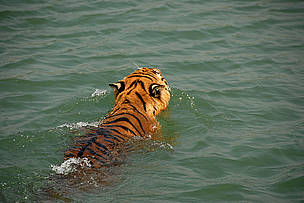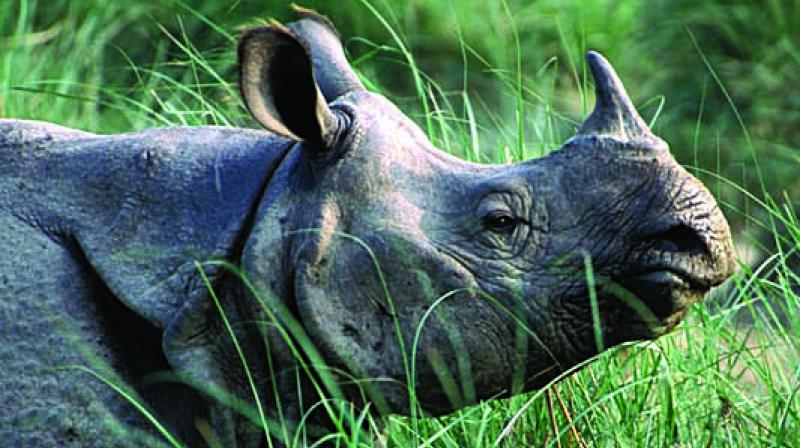 The Royal Bengal Tiger’s name itself dispels an aura of aristocratic charm & elegance and the animal has proven itself worthy of its name time and again. But sadly the Royal Bengal Tiger of West Begnal is literally losing its sheen because of the increasing salinity of the water of Sunderbans.
The Royal Bengal Tiger’s name itself dispels an aura of aristocratic charm & elegance and the animal has proven itself worthy of its name time and again. But sadly the Royal Bengal Tiger of West Begnal is literally losing its sheen because of the increasing salinity of the water of Sunderbans.
Wildlife experts have found that the Royal Bengal Tiger of West Bengal which inhabits the mangroves of Sunderbans is losing weight, and the fine lustre of its skin. The tigers are also shrinking in size as compared to their ancestors who roamed the same wetlands and jungles years ago.
Experts say that the deteriorating physical appearance of the tigers is due to climate change and the increasing salinity of the water.
The average weight of a tiger is over 180 Kg but in Sunderbans it has fallen down to about 110 Kg. Also the length of the tiger has shrunk from about 9 feet to 8 feet.
“We have noticed a huge difference in the weight of an adult Sunderban tiger as compared to other parts of the country,” Pranabesh Sanyal, a retired director of the reserve forest, said.
“The lustre of its coat is also fading because of the increased salinity in the river water,” Sanyal, who has been working on the tiger habitation in the mangrove forest since the early 1980s, added.
In 2010 when the state forest department had been able to catch and weight six tigers of the habitat, all of them weighed between 100 and 110 kg.
The Sunderbans is a unique mangrove ecosystem which serves as a meeting point between the saline sea and the freshwater rivers and ponds. Tigers love to sit besides water bodies and the many small rivulets and lakes inside the mangrove forest serve as excellent homes. But over the years the lakes have begun to dry up and instead of the freshwater, the tigers are now drinking and swimming in the saline sea water more and more.
As per the experts currently, the average salinity in Sunderbans is more than 21 parts per thousand (ppt), which touches 25 ppt during winter. Experts claim that the salinity level in the mangrove forest has increased 15 per cent in the last two decades.
Food shortage is another problem the tigers are facing here.
“Due to the shortage of natural fodder, a tiger has to spend more time trying to catch its prey. We have noticed a significant migration of tigers from the core area to the buffer zones because of the unavailability of food,” Sanyal said.
Shanki Ranjan Banerjee, an honorary director of Wildlife Protection Society of India (WPSI), says,
“According to the records available with the World Wildlife Fund, there seemed to be very few tigers left in the Sunderbans. That means there should be enough number of boars and deer for the tigers to feed on. [But] I remember an interesting incident that dates back to 2009, when a Royal Bengal tiger ate a cobra and died in Netidhopani village of the Sunderbans. The post-mortem revealed that the tiger had died of snake venom. It happened only because of food shortage,” Banerjee points out.
The solution to the problem is really not that difficult to execute. Experts say that the government should create more freshwater ponds in the area so that the tiger has more options to obtain water. Also if a wild boar farm is set up, they can provide ample food for the tiger. Some say that such a kind of farm had been set up in the 80s but was closed due to inept handling.
Sunderbans is part of the world’s largest delta formed at the confluence of the rivers Ganges, Brahmaputra and Meghna. It is spread over a vast area of 4,262 sq km with a major portion lying in Bangladesh.
More Related stories,
Tiger Poaching goes Down in 2011
Canal Project Cuts Crucial Tiger Corridor
How Mumbai Mangroves Save the City Everyday
Image via WWFIndia





